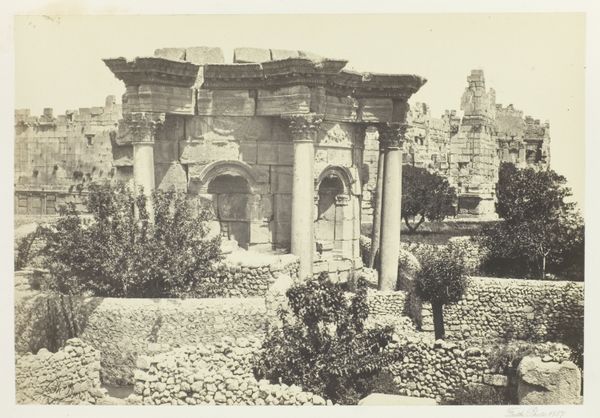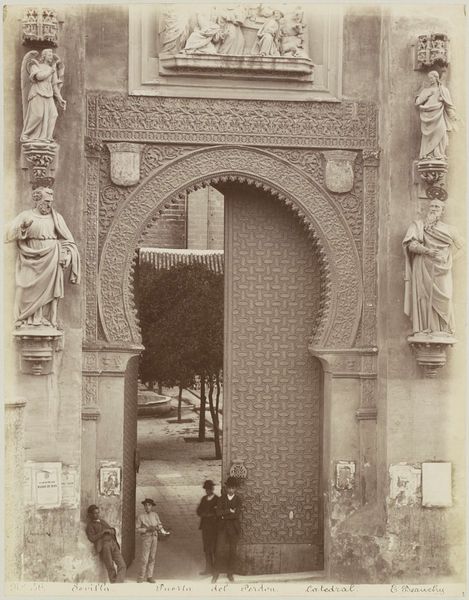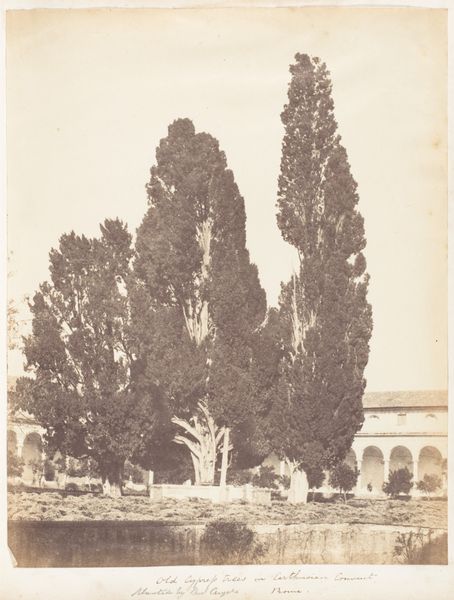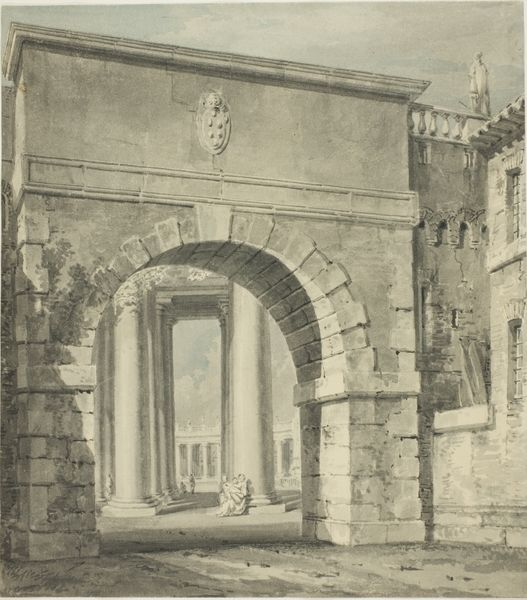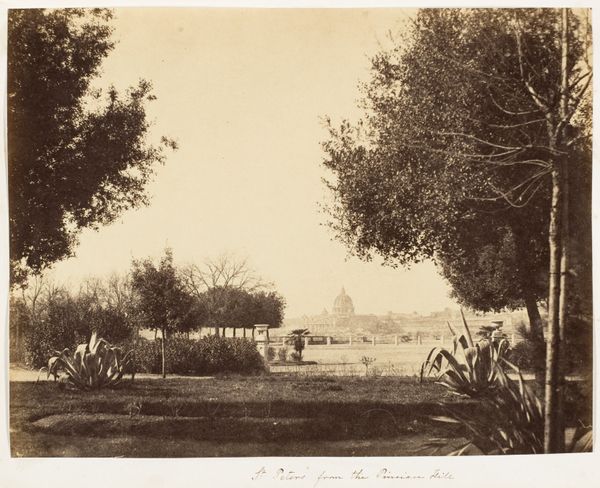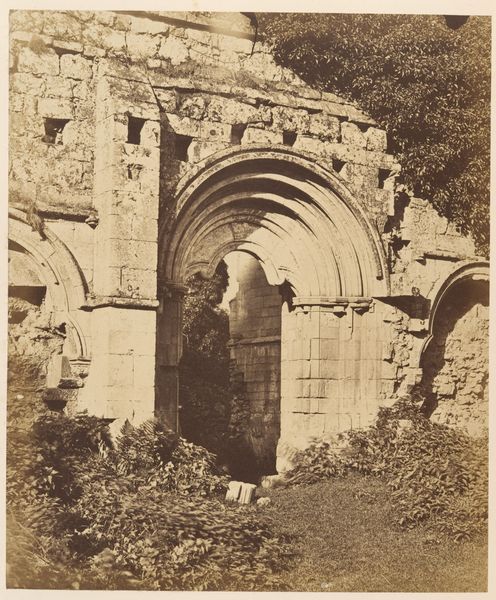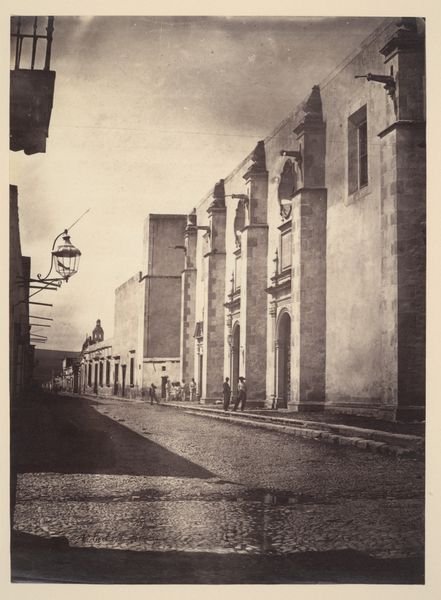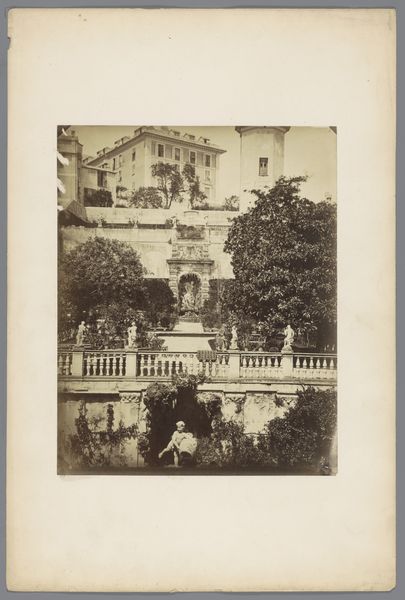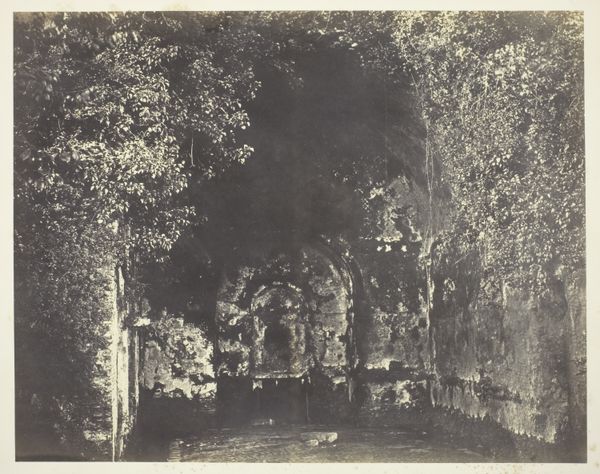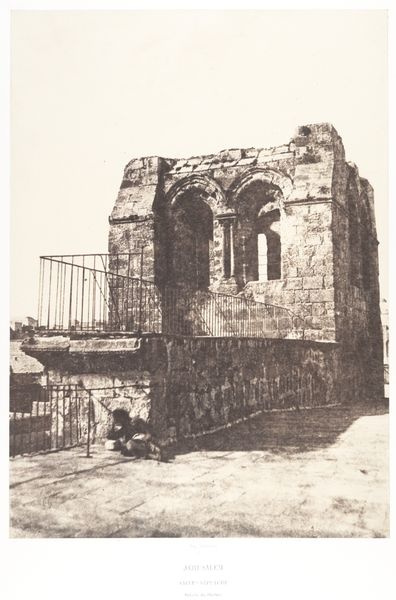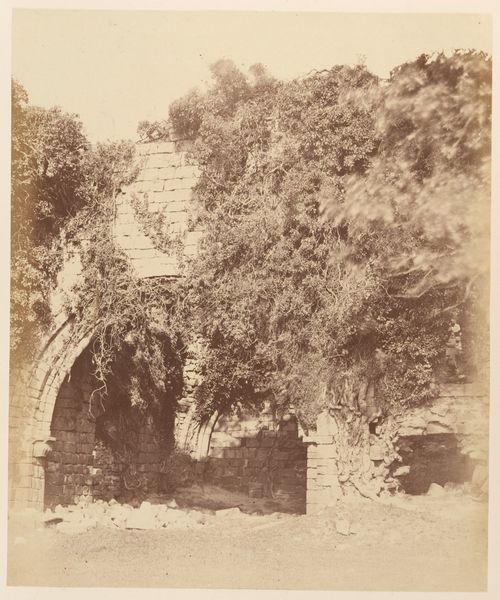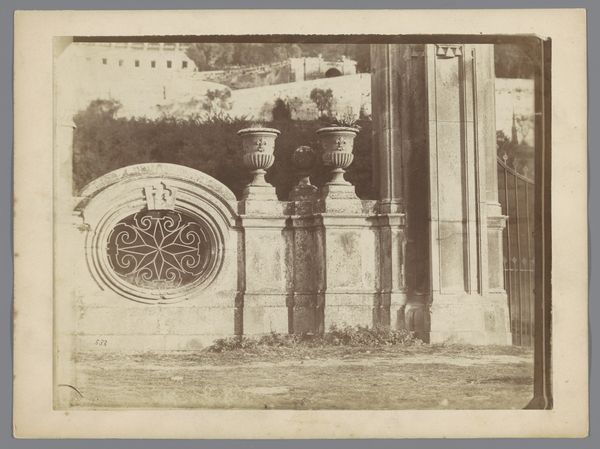
Gezicht op de tuin en fonteinen van Villa d'Este in Tivoli bij Rome c. 1857 - 1875
0:00
0:00
Dimensions: height 486 cm, width 346 cm
Copyright: Rijks Museum: Open Domain
Editor: Here we have Gustave Eugène Chauffourier's "View of the garden and fountains of Villa d'Este in Tivoli near Rome," likely produced sometime between 1857 and 1875, created using an albumen print. There's something so ethereal about the water, almost ghostly. What stands out to you in this work? Curator: As a materialist, I'm immediately drawn to the albumen printing process itself. Consider the laborious preparation involved: the egg whites, meticulously coated onto paper, the silver nitrate solution... Then, exposure to sunlight to reveal this image, fixing it chemically. This wasn't just a snap; it was a manufactured object born of physical, chemical processes that relied heavily on natural resources and, often, unseen labor. Editor: That's a fascinating perspective I hadn't considered! The artistry in the materials themselves. So, does that change how you see the subject matter? Curator: Absolutely. It highlights the social context in which art and image-making existed. The wealthy could afford this meticulous process, and these images circulated among elite circles. So, what appear to be romantic, idyllic landscapes are actually representations of a stratified society – where even documentation of beauty is entangled with material production and access. Look at the fountains: were these complex waterworks just a show of technical or artistic expression, or something that could highlight engineering or consumption? Editor: I see what you mean. The choice of Villa d'Este, with its elaborate fountains, is inherently tied to the resources and social structures of the time. It makes me think about what photographic processes and materials we might take for granted today. Curator: Exactly! Think of the ethical sourcing of materials, labor practices in photography labs, and how digital distribution differs vastly in its materiality, even if it seems "virtual." By understanding this albumen print as a material object shaped by specific conditions, we can better understand its broader implications and connections to production and class. Editor: That definitely gave me a new appreciation for the process and meaning within a photograph like this! I’ll never see photography quite the same. Curator: Indeed! Paying attention to the ‘stuff’ of art allows us to connect aesthetic pleasure with material realities and historical context.
Comments
No comments
Be the first to comment and join the conversation on the ultimate creative platform.
